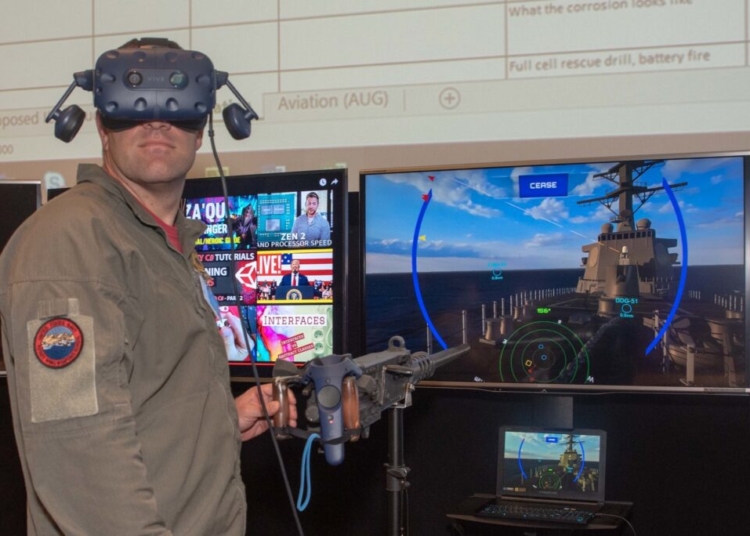In an ever-evolving world, the military sector requires highly skilled and well-prepared soldiers to succeed in modern warfare. Revolutionizing military education and training is crucial to keep up with the changing landscape of warfare. This content highlights five essential resources that are revolutionizing military education and training. These resources include virtual reality (VR) for realistic combat scenario training, artificial intelligence (AI) for personalized learning experiences, augmented reality (AR) for real-time data and insights, gamification for engaging and motivating soldiers, and mobile learning for anytime, anywhere access to training materials. By integrating these technologies, military institutions can develop highly trained and adaptable personnel to effectively respond to evolving threats on the battlefield.
Revolutionizing Military Education and Training: Essential Resources for Modern Warfare
Introduction
In an ever-evolving world, the military sector faces unique challenges that demand constant adaptation. The need for highly skilled and well-prepared soldiers is essential to ensure success in modern warfare scenarios. As technology continues to advance rapidly, revolutionizing military education and training becomes a critical aspect to keep up with the ever-changing landscape of warfare.
1. Virtual Reality (VR)
One of the most significant advancements in military education and training is the integration of virtual reality (VR) technology. VR allows soldiers to immerse themselves in realistic scenarios, enabling them to train in a safe and controlled environment. By simulating combat situations, soldiers can develop critical decision-making skills, enhance their situational awareness, and learn to effectively respond to various threats without being put in harm’s way.
Moreover, VR technology allows for repeated training sessions, allowing soldiers to refine their skills and measure their progress. It also provides an opportunity for collaborative training, giving soldiers the chance to work together and develop effective teamwork strategies.
2. Artificial Intelligence (AI)
The integration of artificial intelligence (AI) in military education and training has shown immense potential. AI can provide personalized and adaptive learning experiences for soldiers, tailoring training programs to their individual needs and strengths. By analyzing data and using predictive algorithms, AI can identify areas where soldiers may require additional support, ensuring they receive the necessary training to excel in their roles.
Additionally, AI can assist in scenario creation, generating sophisticated and realistic training exercises that challenge soldiers and help them develop their tactical skills. AI-powered virtual opponents can create dynamic scenarios, constantly adapting and learning from soldiers’ actions, making the training experience more realistic and effective.
3. Augmented Reality (AR)
Augmented reality (AR) is another valuable resource for revolutionizing military education and training. By overlaying digital information onto the real world, AR enhances soldiers’ perception of their surroundings, providing them with real-time data and insights. This technology enables soldiers to access crucial information on weapon systems, terrain, and enemy positions instantly.
AR also enables realistic mission rehearsals, allowing soldiers to practice their roles in simulated scenarios overlaid onto real-world locations. This helps them familiarize themselves with the terrain, plan their actions, and mitigate potential risks before engaging in actual operations.
4. Gamification
Gamification techniques have proven to be highly effective in military education and training. By incorporating gaming elements into training programs, soldiers can actively engage and maintain their motivation throughout the learning process.
Through gamification, soldiers can compete against each other, earn rewards, and track their progress. This fosters a sense of achievement and healthy competition among soldiers, promoting a continuous improvement mindset. Gamification can also serve as an effective tool for assessing soldiers’ skills, as their performance can be objectively measured and benchmarked against other trainees.
5. Mobile Learning
The widespread use of mobile devices has made mobile learning an indispensable resource for military education and training. Soldiers can access training materials, instructional videos, and interactive modules on their smartphones or tablets, enabling them to learn anytime and anywhere.
Mobile learning also facilitates continuous learning, allowing soldiers to stay up-to-date with the latest developments in their field. They can access reference materials, manuals, and e-learning courses even when deployed in remote locations, ensuring they are equipped with the most current knowledge and skills.
Conclusion
Revolutionizing military education and training is crucial to ensure that soldiers are prepared for the challenges of modern warfare. The integration of VR, AI, AR, gamification, and mobile learning provides essential resources that enhance soldiers’ skills, knowledge, and preparedness. By leveraging these technologies, military institutions can develop highly trained and adaptable personnel capable of effectively responding to evolving threats on the battlefield.












